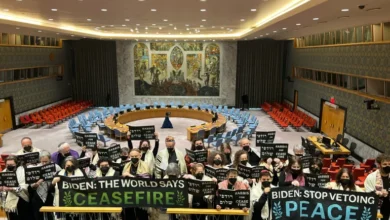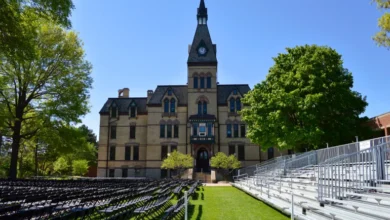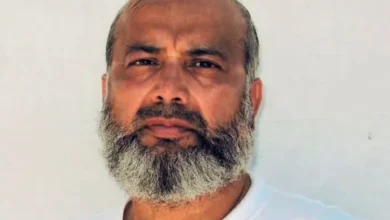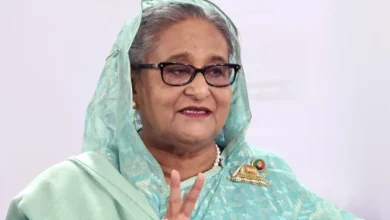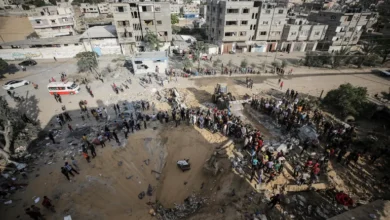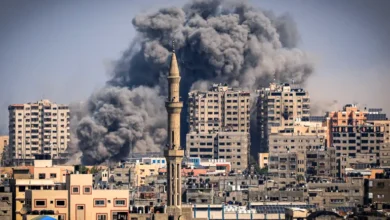We know who created Syria’s torture programme and how
Nerma Jelacic
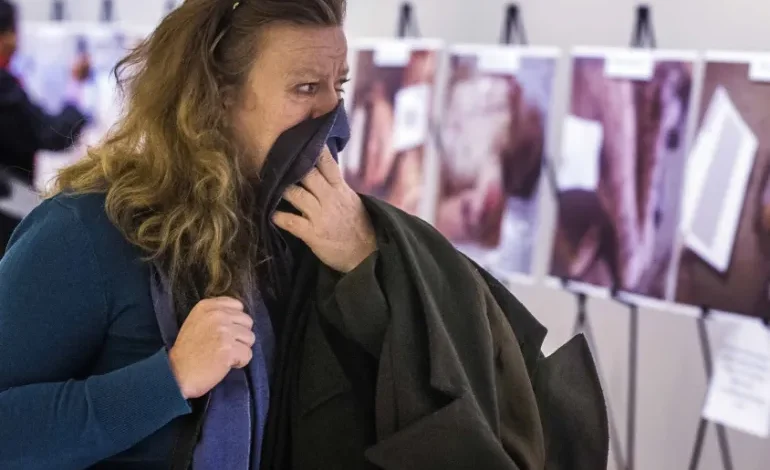
Nerma Jelacic
After 12 years of civil war, hundreds of thousands of people killed and tens of thousands missing, a glimmer of hope for the Syrian people came from the world’s top court. On November 16, the International Court of Justice (ICJ) ruled that the Syrian state must prevent torture of detainees and refrain from destroying evidence of these unlawful acts.
The order was part of ongoing proceedings against Syria for violations of the Convention against Torture which were launched in June after referral by Canada and the Netherlands.
Scepticism about the Syrian government’s willingness to comply with this ruling is indeed justified. However, even if it continues to destroy documentation about its torture programme, enough evidence exposing these atrocities has already been gathered.
Many activists and civil society organisations have unwaveringly documented the human rights abuses suffered by innocent civilians over the past 12 years. Our organisation, the Commission for International Justice and Accountability (CIJA) has been part of this painstaking journey since 2011.
Over the past decade, CIJA investigators have unearthed a staggering trove of more than 1.3 million pages of regime-issued documents. They reveal a story of unhinged power and brutal measures the Syrian regime would resort to in order to maintain its iron grip on power.
Documents like these will help the next phase of the ICJ proceedings, as the parties prepare for the presentation of evidence.
Based on some of these materials, CIJA published a report revealing the structures that were put in place, and the decisions and orders made in the early months of 2011 that cost so many Syrians their freedom and their lives.
The Syrian regime denied the early reports of torture, mass arrests and murders. It primarily attributed the violence reported in 2011 to what it characterised as “armed terrorist groups”. It claimed that these groups were responsible for initiating the violence and destabilising the country. This narrative allowed the government to justify the use of force as a means to restore order and protect national security.
But the regime’s own documents paint a different picture. The Syrian authorities knew the demonstrators wanted freedom and democracy. For example, one military intelligence communication CIJA has obtained refers to an early March 2011 meeting at which the demands of the protesters for freedom, democracy and an end to corruption were discussed and presented as a threat; it was decided the intelligence agencies would take immediate action to suppress them.
Thereafter, intelligence gathering intensified, with local security branches tasked to send reports to Damascus at 4pm each day. They were required to include detailed statements about any protest or riot along with the “names of the persons against whom legal measures have been taken and those who were arrested amongst the troublemakers, activists and instigators to protests” – according to one document issued by the Head of the Political Security Department of the security intelligence dated March 18, 2011.
As demonstrations quickly spread across Syria, growing in size and frequency, the regime unrolled more aggressive policies to repress protesters and opposition figures.
On April 18, 2011, the Central Crisis Management Cell (CCMC), a top-level security coordinating body whose decisions President Bashar al-Assad signed off on, declared that the “time of tolerance and meeting demands is over”.
It called for a “multifaceted confrontation of demonstrators” which included prolonged detention of those already arrested, the arrest of known “offenders”, the authorisation of the use of weapons in certain conditions and the deployment of armed forces “in cases of extreme need”.
The effect was immediate. Only a day after, a violent and now notorious attack by the regime forces on a protest at the Homs Clock Tower took place and the CCMC reported that a number of protesters were shot and killed.
Despite the increased security measures, including mass arrests, the mobilisation and use of Ba’athists and other regime loyalists and the deployment of the military, the situation throughout the country continued to deteriorate through the summer.
In early August 2011, a document CIJA obtained showed that the security intelligence apparatus was admonished for the “laxness in handling the crisis” and “poor coordination and cooperation among security agencies in sharing information and the results of the ongoing investigations”.
Shortly after, a series of steps that took the crackdown to a new level were undertaken. A circular distributed by Military Intelligence Branch 294 on August 17, 2011 reads: “Launch daily joint security-military campaigns in key security sectors of your choice as per security priorities. […] You are requested to arrest such persons, particularly those who are inciting people to demonstrate, funders of demonstrators, members of coordination committees who organise demonstrations, conspirers who communicate with people abroad to keep demonstrations ongoing and those who tarnish the image of Syria in foreign media and international organisations.”
The order set up an infrastructure for what was to become a bureaucratic machinery overseeing mass arrests and torture of targeted individuals. “Investigative bodies” were set up, consisting of members of the security and intelligence agencies to interrogate the detainees. The interrogations were supposed to generate new lists of names of people to be targeted in the mass arrest campaigns.
The effect of this circular was immediate and chilling. Arrest records secured by CIJA show that a systematic and coordinated campaign of arrests and detention by all of the main security intelligence agencies was launched.
In many cases, the records did not indicate any criminal offences as a reason for arrest. They also showed that minors and elderly persons were not spared. In some instances, the same individual appears in a number of detainee lists generated over a period of time, reflecting the pervasive nature of the security state apparatus’ detention campaign.
As detainees were passed between different security agencies, the brutality they had gone through would become apparent in internal regime reports:
“It is impossible for us to thoroughly interrogate some of the detainees due to their poor medical condition caused by severe beating which, in some cases, has led to permanent disability while being prolongedly detained at some security agencies before they were handed over to us,” one such report read.
Eventually, according to documents obtained by CIJA, the regime mortuaries started filing complaints – that the bodies of deceased detainees were in such a bad state they were unable to release them to family members.
Photographs smuggled out of Syria by former security operative code-named Caesar depict in horrific detail tortured and emaciated bodies of dead detainees. When detention morgues filled up, the bodies were piled up in hallways, toilets and courtyards. Eventually, the regime started transporting and burying them in unmarked mass graves as testified by another former operative code-named Grave Digger, who drove one of the corpse-filled trucks.
These are just some highlights of the trove of documents that CIJA has gathered that reveal how decisions made at the highest level in the Syrian regime and approved by al-Assad himself set in motion a torture apparatus of enormous proportions. In the following years, hundreds of thousands of protesters, dissidents and ordinary Syrians would disappear into this archipelago of torture chambers or wind up dead in the streets and fields of Syria.
CIJA evidence has already been used in over a dozen cases including the civil lawsuit launched in the US against Syria over the killing of American journalist Marie Colvin and the trial of Anwar Raslan, a former Syria colonel in the General Intelligence Directorate, which took place in Germany.
On December 8, a suspected member of the National Defence Force, a paramilitary force coordinated and controlled by the regime, was arrested in the Netherlands on charges of torture and sexual violence. A couple of weeks earlier Mustafa A, an alleged member of the pro-regime Liwa al-Quds group went on trial in the Hague on charges of torture. In both cases, evidence collected by CIJA played a role. Other cases are coming up in European courts thanks to the collaborative efforts of law enforcement and civil society actors.
The wheels of justice are turning slowly, and it may well take years for the ICJ to issue its judgement. But as the proceedings continue, CIJA’s troves of documents provide ample evidence of who is responsible for the Syrian regime’s machinery of death.

